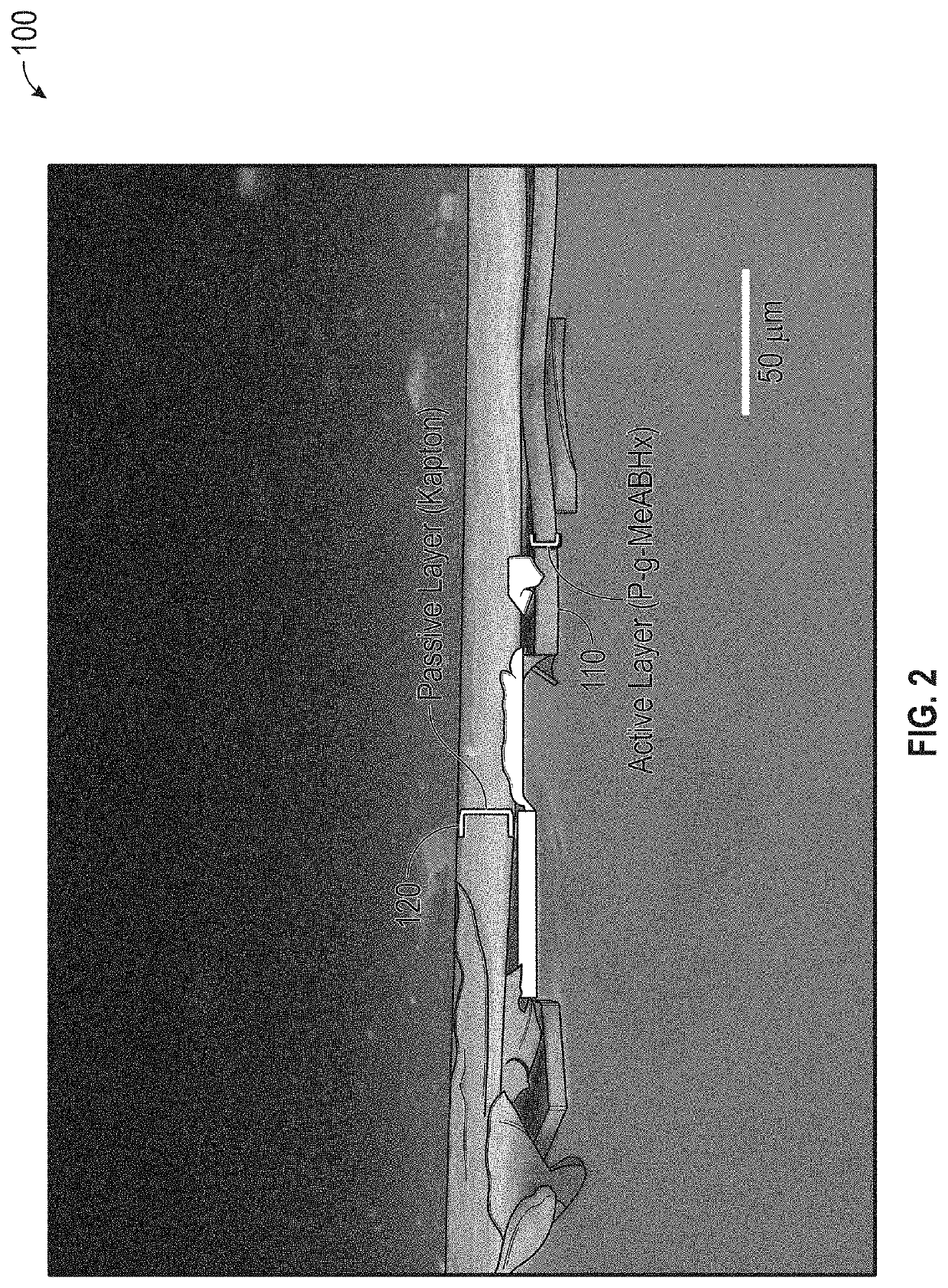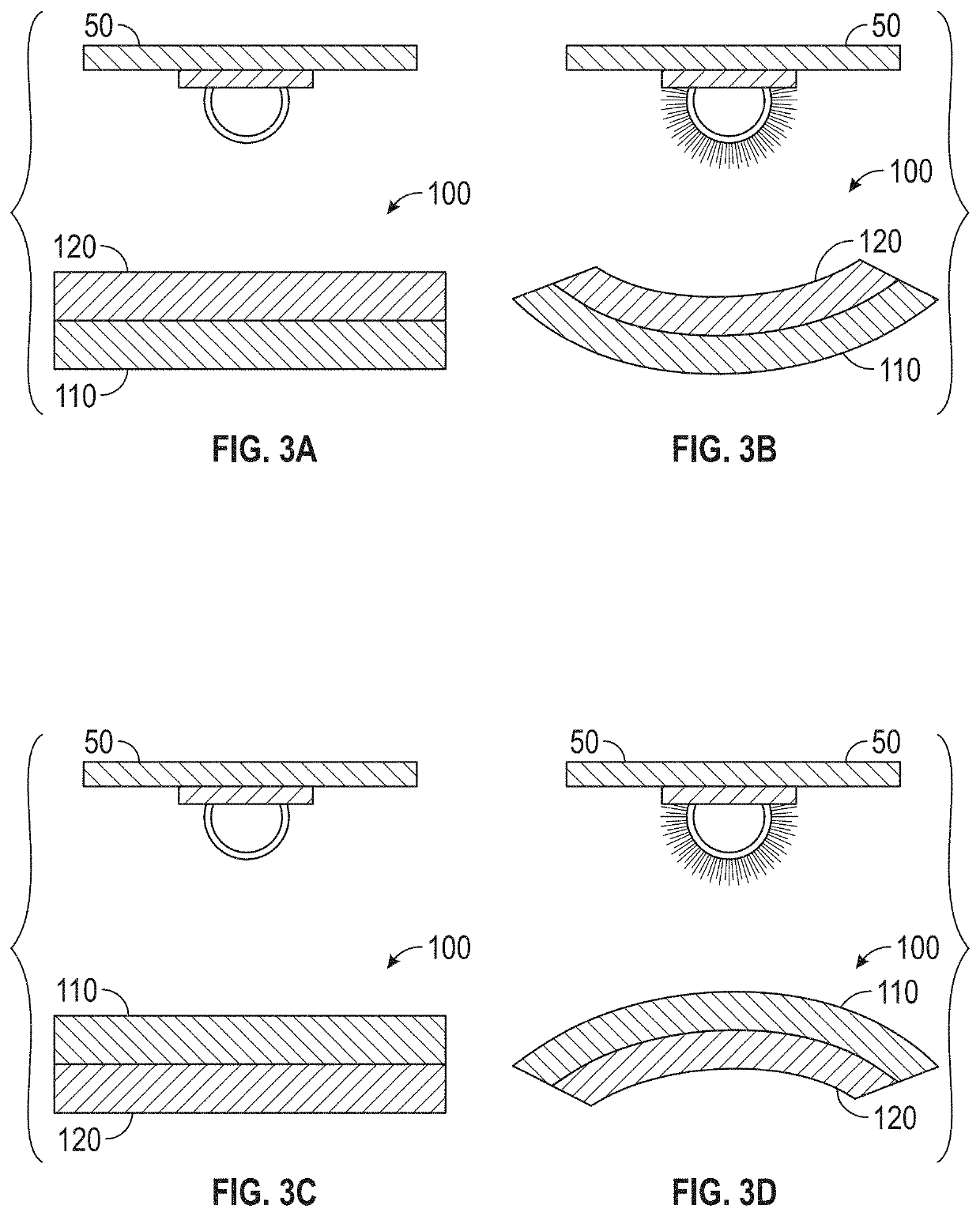Externally Activated Shape Changing Device
a shape changing device and external activation technology, applied in the direction of mechanical power devices, mechanical equipment, machines/engines, etc., can solve the problems of not being suitable for multi-functional use, achieve the effect of reducing the amount of onboard weight, reducing the number of parts, and more complex devices
- Summary
- Abstract
- Description
- Claims
- Application Information
AI Technical Summary
Benefits of technology
Problems solved by technology
Method used
Image
Examples
example
[0056]Different designs and concepts were 3D printed to test the shape memory capabilities of PLA. A spline with four curves, 68.39 mm in length, 10 mm wide, and a thickness of 0.50 mm was 3D printed on the 3D printer. The designs were placed into a pool of water at 70° C. for 60 seconds and compressed within the water. After the spline was compressed, it is removed from the pool and allowed to cool to room temperature, which caused the compressed spline to harden (FIG. 4A). The spline maintained its temporary compressed shape under Tg. The compressed spline quickly expands back to its original shape once it is returned to the 70° C. pool of water (FIG. 4B). Alternate designs of PLA 4D printing were tested using the same method. In other examples, a 3D printed “arm” can be bent in the user's desired direction and return to the permanent straight shape (FIGS. 4C and 4D). In another test, a “drxl” logo can be compressed or extended when heated and return to the “drxl” symbol when heat...
PUM
| Property | Measurement | Unit |
|---|---|---|
| glass transition temperature | aaaaa | aaaaa |
| temperature | aaaaa | aaaaa |
| glass transition temperature | aaaaa | aaaaa |
Abstract
Description
Claims
Application Information
 Login to View More
Login to View More - R&D
- Intellectual Property
- Life Sciences
- Materials
- Tech Scout
- Unparalleled Data Quality
- Higher Quality Content
- 60% Fewer Hallucinations
Browse by: Latest US Patents, China's latest patents, Technical Efficacy Thesaurus, Application Domain, Technology Topic, Popular Technical Reports.
© 2025 PatSnap. All rights reserved.Legal|Privacy policy|Modern Slavery Act Transparency Statement|Sitemap|About US| Contact US: help@patsnap.com



